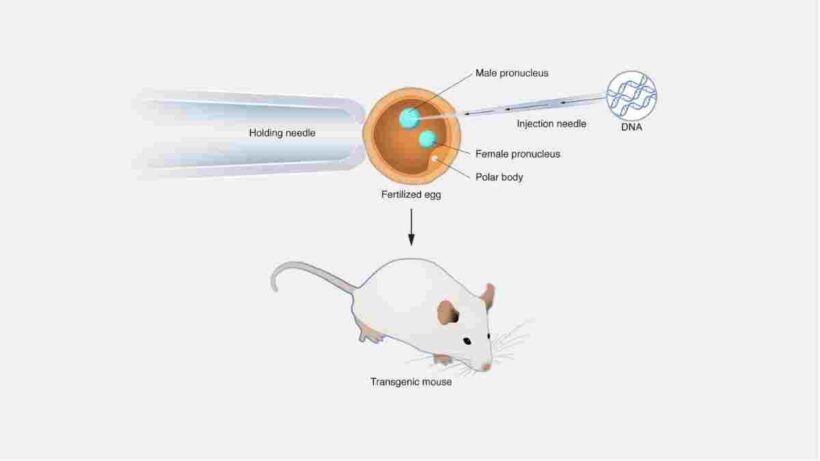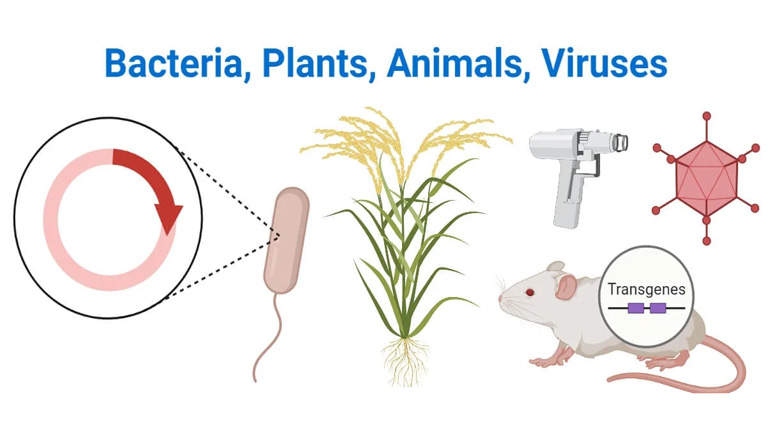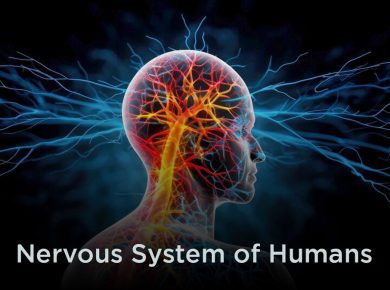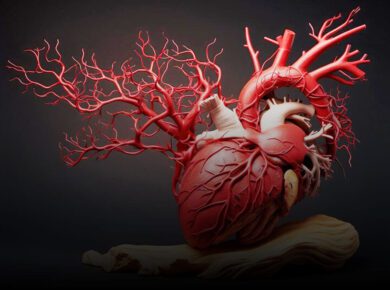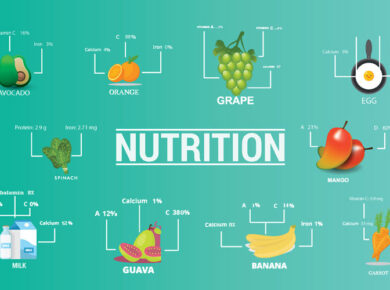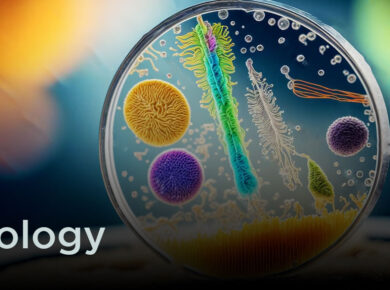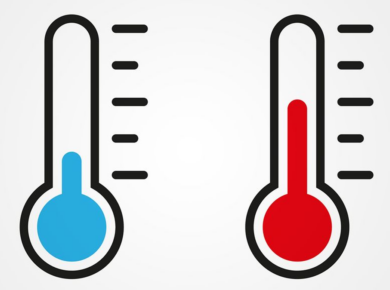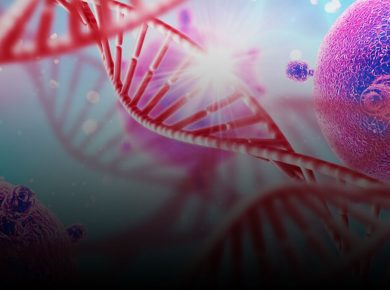Transgenic Microbes, Plants and Animals
Also called genetically modified organism (GM organisms), transgenic organisms contain in their genetic makeup foreign genes, that is genes from another species or another kind of organism. Transgenics are raised through recombinant DNA technology.
Transgenic Microbes
Bacteria are easiest to be genetically modified by adding foreign gene into their plasmids through rDNA technology as you have already learnt in this lesson.
Transgenic bacteria with insulin gene and human growth hormone gene have been cloned to provide these hormones for human use. Other uses of transgenic bacteria are in decomposing pollutants and extracting metals such as copper and gold.
Transgenic plants
Some genetically modified plants are herbicide and pest resistant. A genetically modified tobacco plant contains a gene from the firefly and emits green light.
Transgenic Animals
The gene for growth hormone from cattle have been inserted through genetic engineering to produce large fish, pigs and some other animals.
Transgenic goats can produce a blood clotting protein in their milk. This may be useful for children suffering from disorders such as haemophilia in which blood does not clot.
DNA fingerprinting
Like our fingerprints, the repeated sequences in our DNA are unique. You must have heard that the police lift fingerprints from the scene of crime to identify the culprit in case of rape, theft or murder.
In 1984, Alec Jaffreys, a geneticist invented a technique which could distinguish the DNA of a person from that, of another and called this technique genetic.
Genetic engineering offers a wide scope for transferring genes from one organism to another, such as plants to microbes, animals to microbes. Such gene transfers are not possible by other techniques like hybridisation. However, rDNA technology is not without problems one danger is that accidentally or intentionally non pathogens may be produced and misused as in biological warfare. Hence strict guidelines have been laid down for research in genetic engineering.
Related Content: IAS Mania covers all topics in the science category for the UPSC exams.
Fingerprinting or DNA fingerprinting. This technique is now used for scientific investigation of crime. For example identifying correctly the accused in rape or murder or to solve paternity dispute (find out who the actual father of a child is). DNA fingerprinting can be done from very small amounts of DNA which are taken out of a tiny drop of blood, semen, hair follicle, tooth pulp etc. picked up from the scene of crime. The steps in the technique are:
- DNA is isolated from blood, semen etc.
- Its quantity is increased through PCR
- The lengths of these DNA pieces vary from person to person because of certain repeated sequences of nucleotides in DNA which vary.
- The DNA pieces are separated from each other according to size and charge with the help of a technique called electrophoresis.
GENOMICS
Genome is a collective term for a full set of genes in an organism. Genes are paired and so genome means all the genes present in a haploid (n) set of chromosomes.
Genomics is the analysis of the genome data that is, finding out the functional nucleotide sequences (genes) in the DNA of an organism.
For more updates, visit www.iasmania.com. Please share your thoughts and comments.
